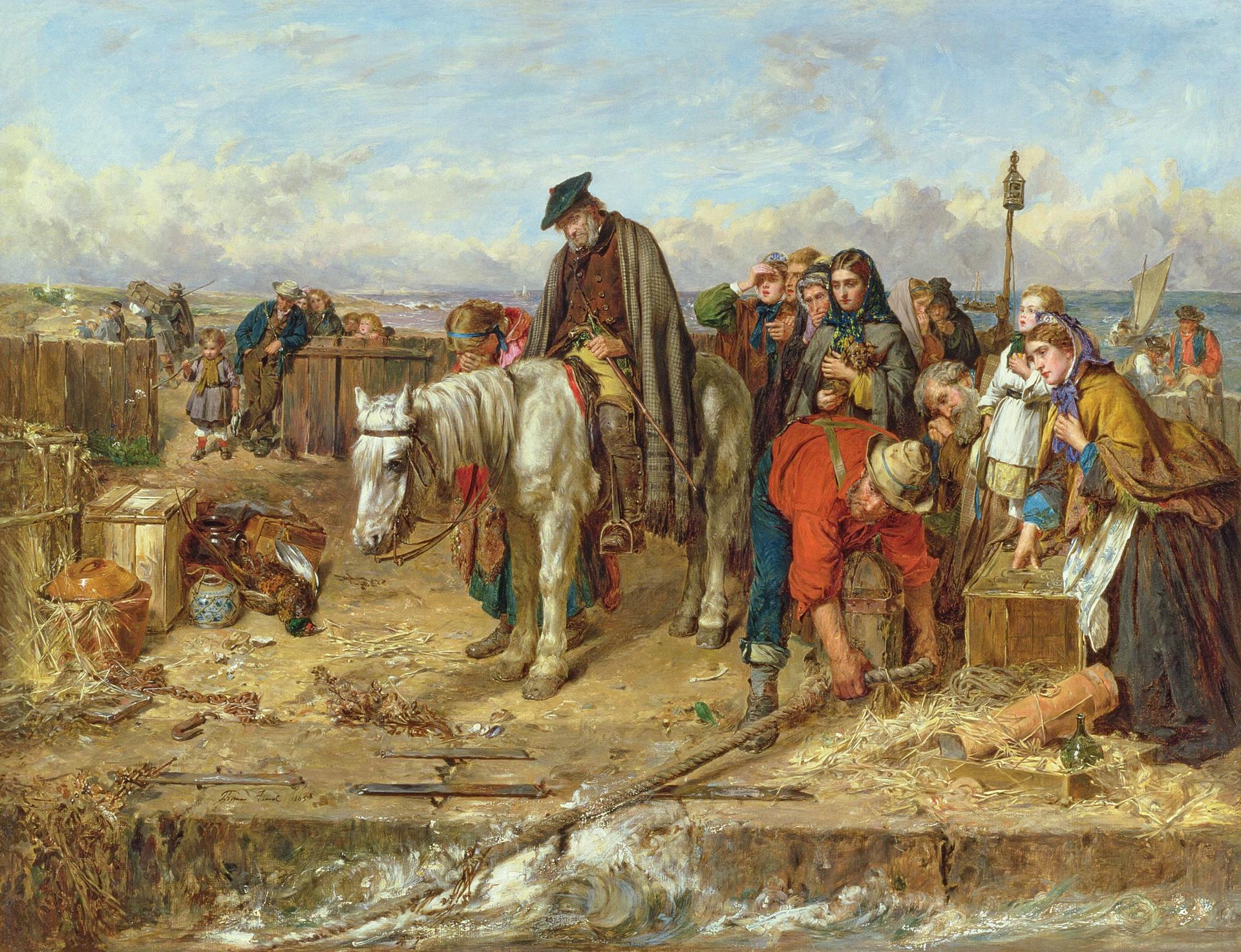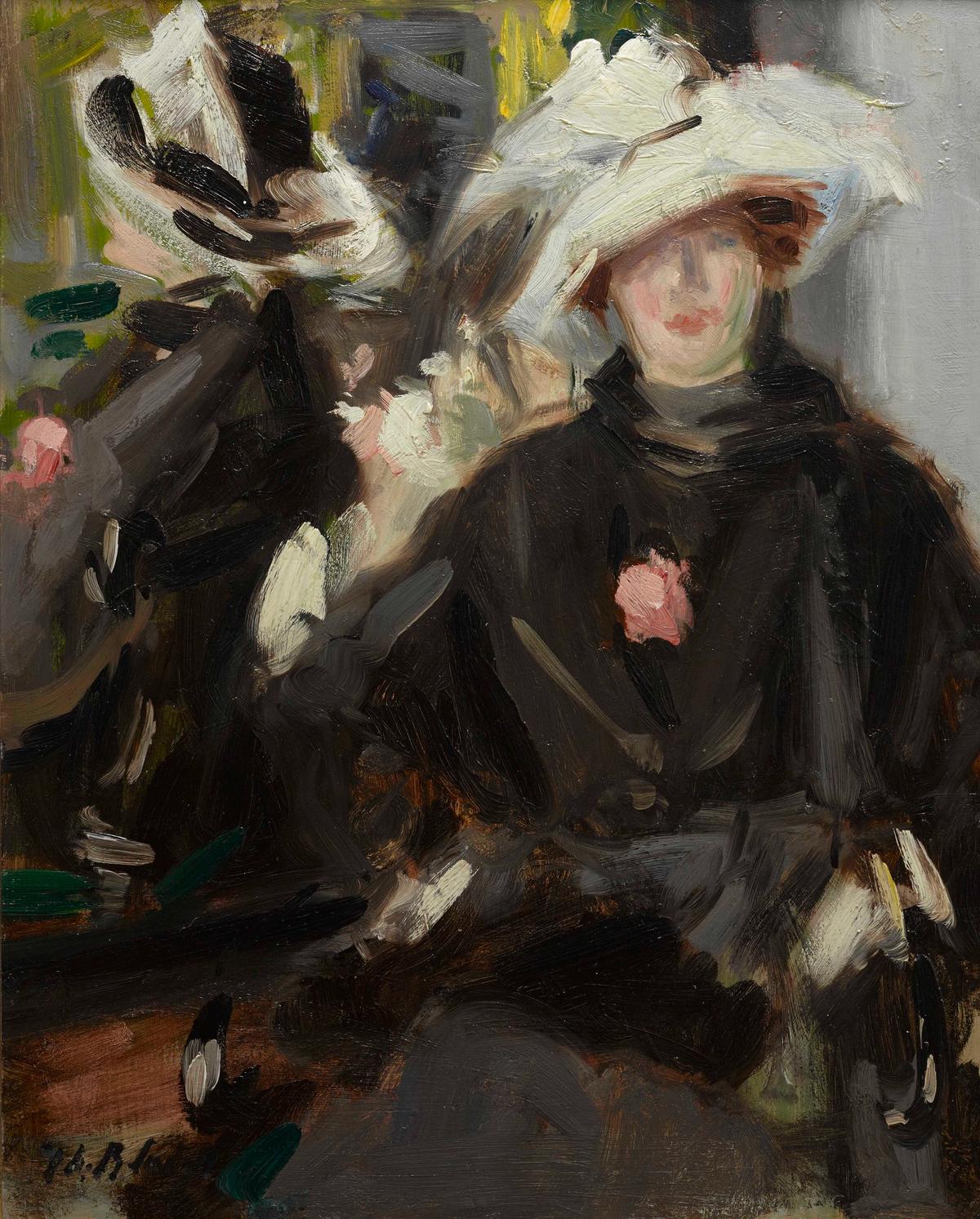The Fleming Collection had modest beginnings. Works of art were first bought in 1968 to brighten up the London offices of the merchant bank Robert Fleming & Co. From the start, it was decided, however, to acquire only Scottish works from all periods to honour the bank’s founder, Robert Fleming, who was born in 1845 in Dundee. Now numbering more than 600 works, a selection has been made to create two shows in Scotland to mark the collection’s 50th birthday. Radicals, Pioneers and Rebels (until 3 September) is at the Fine Art Society in Edinburgh and Rhythm of Light: Scottish Colourists from the Fleming Collection (until 30 September) is being shown in the Maclaurin Art Gallery at Rozelle House in Ayr.
A timely theme of the Edinburgh show is the frequency with which refugees figure in Scottish art, past and present. The Highland Clearances—the evictions forced by the great landowners in the Highlands and Western Isles during the latter part of the 18th and the first half of the 19th centuries to make way for sheep farming—were a traumatic experience that has been branded on the minds of the Scots ever since. Many Scottish artists captured the artistic, social and political damage that resulted from the Clearances. In particular two of the collection’s most prized paintings, Thomas Faed’s The Last of the Clan (1865) and John Watson Nicol’s Lochaber No More (1883), express the anguish of the event. Connecting Scottish refugee history to contemporary events, the exhibition includes photographs of the Calais Jungle by the Iranian artist Iman Tajik, who himself was a refugee and has been granted asylum in the UK. He is a recent graduate of the Glasgow School of Art. The show also features works by the late 19th-century group of painters the Glasgow Boys and pioneering Scotswomen artists of the 20th century, whose work highlighted the last century’s feelings of alienation.

Thomas Faed’s The Last of the Clan (1865) Courtesy of the Fleming Collection
Over in Ayr, the Scottish Colourists—one of the great strengths of the collection—are on show. The Colourist paintings by Samuel Peploe, John Duncan Fergusson, George Leslie Hunter and Francis Cadell were among the first works added to the collection. One of the first purchases in 1968 was Hunter’s Peonies in a Chinese Vase (around 1928). This, along with works such as Peploe’s Luxembourg Gardens (around 1910), Fergusson’s Blue Nude (around 1909-10) and Cadell’s The Feathered Hat (around 1910), chart the artists’ careers from the early influence of Whistler and Manet, through the breakthrough impact of the Fauves, to the mature works of the 1920s which saw a prodigious stream of Colourist painting.
James Knox, the director of the Fleming Collection and the former managing director of The Art Newspaper, said of the two exhibitions: “The aim of our dynamic exhibition programme is to highlight the achievements of Scottish artists to both new and familiar audiences. As such the range of masterworks in the Fleming Collection brings into focus native talent of the Scots who are capable of producing works of art that can hold their own in an international context.”


